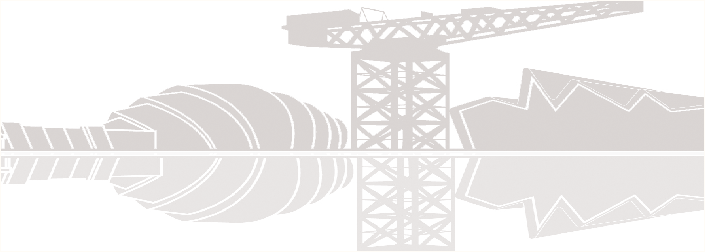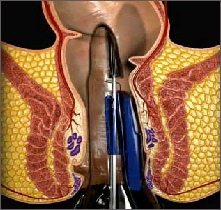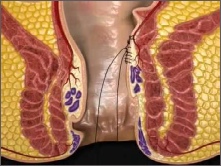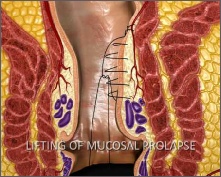

GLASGOW COLORECTAL CENTRE
Scotland’s Best Private Colorectal Surgery & Colonoscopy Clinic
info@colorectalcentre.co.uk
If you have any questions, call Catherine on 0735 506 6597

© Glasgow Colorectal Centre. All Rights Reserved

 Book an Appointment
Book an Appointment
Any questions? Call Catherine on 0735 506 6597
Info@colorectalcentre.co.uk

What does the term THD mean?
The term THD means Transanal Haemorrhoidal artery Devascularisation. Transanal means that the operation is performed through the anus or back passage (transanal). The remaining part of the name tells us that the procedure is designed to reduce the blood supply to the haemorrhoids (devascularisation) by using an ultrasound to guide the surgeon to place a suture or stitch across the haemorrhoidal arteries. This makes the haemorrhoids shrink. The haemorrhoidal arteries are the blood vessels that supply the haemorrhoids.
How does the operation work?
The operation involves a general anaesthetic and takes about 40 minutes to perform. A small disposable plastic proctoscope (which has an embedded micro-
If a patient undergoing the procedure also has problems with protrusion or prolapse of haemorrhoids, the surgeon can also place additional stitches to lift or pull the loose haemorrhoidal tissue up into the back passage. The additional “lift” of the haemorrhoids is sometimes called a haemorrhoidopexy.
The operation is almost always performed under general anaesthetic, although most patients who undergo a THD procedure are able to go home the same day. On occasion (e.g. if the procedure is performed in the evening) they may have an overnight stay.

- Step 1: THD proctoscope with embedded Doppler ultrasound probe is inserted into anus and identifies the precise location of the haemorrhoidal arteries (there are usually several arteries)
- Step 2: A stitch is passed through a small opening in the proctoscope to catch the haemorrhoidal artery. The opening in the proctoscope is precisely aligned with the Doppler signal so that it goes around the artery, allowing the surgeon to tie off the vessel, causing the haemorrhoid/pile to shrink.
- Step 3: The loose haemorrhoidal tissue is gathered up in a continuous stitch. When the 2 ends of the stitch are tied together, the haemorrhoidal tissue is ‘lifted’ or cinched back into the upper anal canal, which prevents it from coming down when passing a bowel motion.
What is a HALO treatment for piles and how does it differ from a THD procedure?
The term HALO means Haemorrhoidal Artery Ligation Operation. You will see if you compare this with the meaning of the THD procedure that it really means the same thing and essentially is the same operation. The reason for two different names for the same operation is because two different companies make their own version of the disposable proctoscope with an embedded Doppler ultrasound that the surgeon uses to perform the procedure. In any effort to try and separate the two similar devices, each company has coined a different name for what is really the same operation.
Of course, each company claim that their proctoscope enables a better ligation/devascularisation of the haemorrhoidal arteries. In particular, the makers of the THD proctoscope suggest that their device is also specifically designed to facilitate an effective “lift” of prolapsed/protruding haemorrhoidal tissue. However, rather than the device or name of the operation being important, it is much more important that the surgeon performing the procedure has had appropriate training and is experienced in using their instrument of choice.
What are the advantages of the THD procedure or the HALO treatment for piles?
No tissue is cut away and so no “raw” or open wounds remain. The procedure is performed in an area of the rectum above the anal canal where there are very few nerve endings and little sensation. As a result, there is a considerable reduction in pain compared to traditional surgical methods such as a standard or classic haemorrhoidectomy.
Because there is relatively little discomfort, patients usually have a much faster recovery and are often able to return to work within a few days, which is much quicker than after conventional haemorrhoid surgery.
The THD procedure may be called minimally invasive surgery (MIS), since the surgeon does not cut or remove any tissue. It also appears to cause fewer complications such as anal narrowing or stenosis, persistent open anal wounds or pain, all of which are complications of conventional haemorrhoid surgery.
What are the complications of the THD - HALO procedure?
Most patients get on well with this operation. It is not uncommon for patients to experience a mild ache in their back passage after surgery or low down in their tummy. However, in our own experience, most patients will be very comfortable within 48 hours after the operation. A small proportion of patients may have some persisting discomfort/pain but it is unusual for patients to complain of significant discomfort beyond a week after the procedure.
Not infrequently, there may be a sense of urgency to move one’s bowels after the operation. For most patients, this settles within a week or so. Some patients will pass some blood after the procedure, but this is rarely severe and generally settles without the need to do anything further. A small proportion of patients may have difficulty in passing urine. This most commonly occurs in men who were already having problems with their prostate.
Because the procedure does not remove any tissue, recurrence of symptoms or prolapse can occur. However, if you ask people who have had the procedure how they feel about the operation, between 80-
Can I undergo a THD - HALO treatment at the Glasgow Colorectal Centre?
Yes. Glasgow Colorectal Centre surgeon, Richard Molloy performs this procedure and is happy to assess your suitability for the procedure. He has trained and evaluated both the HALO and THD procedures and now performs the THD procedure as his procedure of choice.
Will my Private Health insurance cover the cost of the THD procedure?
Yes, all of the main Private Health insurers will cover this treatment at the Glasgow Colorectal Centre. If you do not have Private Health insurance, it is also possible to have the procedure performed as a fixed price procedure.
Where can I get more information on the THD procedure?
www.thehaemorrhoidcentre.co.uk
Industry websites providing information on anorectal conditions and the THD procedure for haemorrhoids

THD procedure and HALO treatment for piles / haemorrhoids
Indications, procedure and advantages over standard haemorrhoidectomy

The THD procedure is a cutting-edge operation which has revolutionised the surgical treatment of haemorrhoids (also known as piles). The procedure uses a mini Doppler ultrasound probe to identify and treat the blood vessels which supply the haemorrhoids, thereby causing them to shrink. Because no cutting or excision of tissue occurs, the THD procedure causes less pain and tissue damage, which enables a faster recovery compared to conventional surgical treatment of haemorrhoids.


If you have any questions or wish to find out more information about about haemorrhoids or the THD -
They will be able to arrange a referral to a colorectal specialist centre such as the Glasgow Colorectal Centre.



